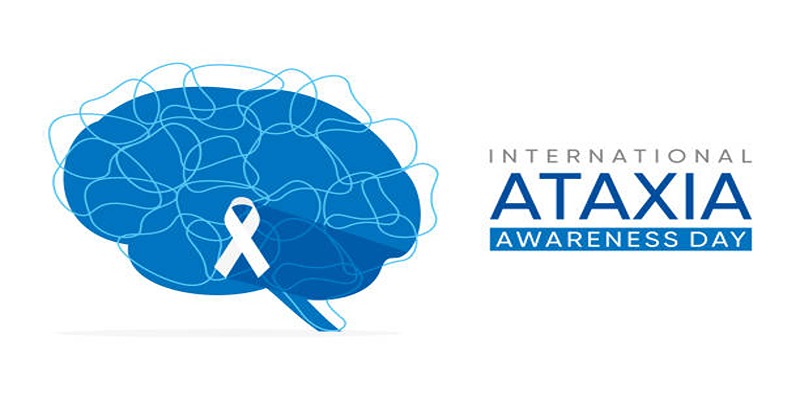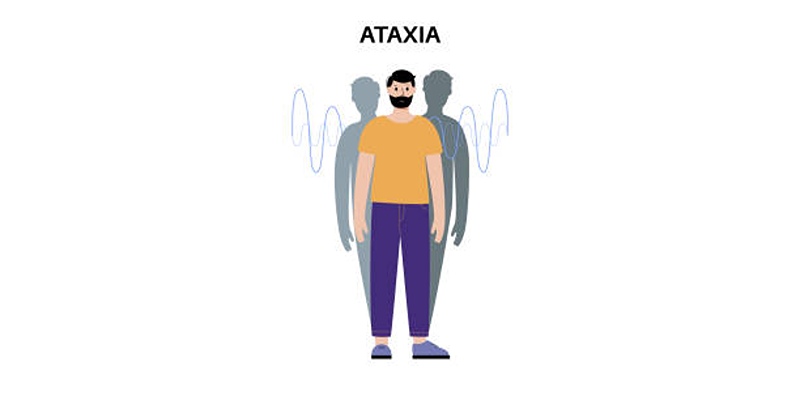Understanding the Different Types of Ataxia
Ataxia creates neurological problems which impair both movement and balance together with verbal communication because it originates from cerebellum or nervous system breakdowns. Ataxia consists of numerous varieties that manifest different pathological reasons and clinical manifestations along with specific therapeutic strategies. This guide establishes a detailed overview about the diverse types of ataxia together with their anatomical root causes and current evaluation and therapeutic possibilities.
Types of Ataxia

Ataxia can be classified into several types based on its cause, progression, and genetic factors. Below is an overview of the key types of ataxia and their distinctive features.
Hereditary Ataxia
The inheritance of hereditary ataxia occurs genetically through family lines because it stems from gene variations. The genetic-based ataxia includes two main examples where Friedreich's ataxia affects ear nerve and spinal cord structures and spinocerebellar ataxias damage the cerebellum. Spastic Ataxia requires genetic tests for proper medical diagnosis because its symptoms become noticeable only gradually through abnormalities in walking function and motor movement coordination alongside speech disorders. Supportive treatments combined with lifestyle modifications assist patients in dealing with their symptoms although no definite treatment exists.
Acquired Ataxia
The development of acquired ataxia occurs due to external sources that include injuries together with infectious agents or toxic substances rather than genetic transmission. Head trauma together with stroke create major risk factors that bring about acquired ataxia. The symptoms of acquired ataxia differ according to its causes yet the main presentation includes sudden balance and coordination problems. The identification of the underlying cause requires early diagnosis that stems from medical history analysis and imaging examination results.
Episodic Ataxia
Episodic ataxia is characterized by temporary episodes of poor coordination, dizziness, and muscle weakness. These episodes are often triggered by stress, physical exertion, or caffeine consumption. Unlike chronic forms of ataxia, episodic ataxia typically allows individuals to have periods of normal functioning between episodes. This condition is primarily genetic and can be identified through specific testing. Medications like acetazolamide and lifestyle changes to avoid triggers are commonly used to reduce the frequency and severity of episodes, improving daily functioning for those affected.
Causes and Risk Factors
Ataxia can arise from a variety of causes, including genetic, neurological, and environmental factors. Understanding these underlying causes is essential for effective diagnosis and treatment.
Genetic Causes
Genetic mutations are a prevalent cause of ataxia, with conditions like Friedreich's ataxia and spinocerebellar ataxias being inherited. These disorders result from gene abnormalities that impact the nervous system's ability to function properly. Genetic testing often plays a crucial role in identifying these mutations. While some genetic forms of ataxia are progressive, early diagnosis allows for targeted therapies and better disease management, offering hope to affected individuals and their families.
Neurological Causes
Damage to the cerebellum or other parts of the nervous system is another major contributor to ataxia. This can result from strokes, multiple sclerosis, brain injuries, or tumors. Such conditions disrupt the brain's ability to coordinate movements, leading to symptoms of poor balance and coordination. Treating underlying neurological issues, such as reducing inflammation or addressing tumors, can significantly alleviate symptoms. Rehabilitation therapies, including physical and occupational therapy, are also invaluable for improving mobility and supporting patient independence.
Environmental or External Factors
Certain environmental factors, such as exposure to toxins, or vitamin deficiencies, can also cause ataxia. Identifying and addressing the specific environmental trigger is essential for managing symptoms. Treatment may involve eliminating exposure to harmful substances, supplementing nutritional deficits, and adopting a healthier lifestyle to prevent further damage and improve overall well-being.
Symptoms and Clinical Presentation
Ataxia presents with a variety of symptoms that affect movement, coordination, and other bodily functions. Below are the common signs categorized under specific aspects.
Gait Abnormalities
Individuals with ataxia often exhibit an unsteady or staggering walk, frequently described as a “drunken” gait. This occurs due to the loss of coordination between muscles responsible for maintaining stability. Patients may find it challenging to walk in a straight line or balance on one leg. These difficulties significantly increase the risk of falls and injuries, highlighting the importance of supportive measures such as walking aids during treatment or rehabilitation.
Limb Coordination Issues
Fine motor skills in the arms and hands are heavily impacted by ataxia, leading to clumsy or uncontrolled movements. Tasks requiring precision, such as buttoning a shirt or using utensils, become arduous. This symptom originates from impaired synchronization between the brain and peripheral muscles. Therapeutic interventions such as physical therapy or activities that enhance hand-eye coordination may help patients regain some degree of functionality and independence over time.
Speech and Swallowing Problems
Ataxia can disrupt muscle control in the mouth and throat, resulting in slurred speech (dysarthria) or difficulties swallowing food and liquids (dysphagia). These issues may lead to miscommunication and potential nutritional deficits if left unaddressed. Speech therapy plays a crucial role in managing these symptoms, with therapists using tailored exercises to strengthen affected muscles. Supportive tools, like assistive communication devices, may also help mitigate daily challenges in patient interactions.
Diagnosis and Testing Methods

Accurately diagnosing ataxia involves a combination of clinical evaluation and diagnostic testing. Below are key methods used by healthcare professionals.
Neurological Examination
A neurological exam is often the first step in identifying ataxia. During this examination, a doctor evaluates coordination, balance, reflexes, and muscle strength. This assessment helps identify specific areas of dysfunction within the nervous system. Physicians may also assess the patient’s medical history and ask about genetic predispositions, as some types of ataxia are hereditary. Findings from this exam guide further diagnostic steps and help in differentiating ataxia from other neurological conditions.
Imaging Studies
Imaging studies, such as magnetic resonance imaging (MRI) or computed tomography (CT), are critical in diagnosing ataxia. These scans provide detailed images of the brain and spinal cord, often revealing abnormalities like cerebellar degeneration, tumors, or strokes. Imaging can also help identify structural causes of ataxia, such as trauma or infections. Radiologists work alongside neurologists to interpret these results, offering important insights into the underlying condition contributing to the patient’s symptoms, which guide the creation of a tailored treatment plan.
Genetic Testing
Since several types of ataxia are hereditary, genetic testing is a valuable tool for diagnosis. This testing involves analyzing the patient’s DNA for mutations linked to specific forms of the disease, such as spinocerebellar ataxia (SCA) or Friedreich’s ataxia. Genetic counseling is often recommended alongside testing, offering patients and families information about inheritance patterns and risk factors. Accurate genetic diagnosis aids in understanding prognosis and allows for more personalized management strategies, potentially guiding eligibility for certain clinical trials or advanced therapeutic options.
Conclusion
Ataxia remains a complex condition requiring a multidisciplinary approach for effective management. Advances in diagnostic tools, including advanced imaging and genetic testing, have improved the ability to identify underlying causes and tailor treatments. While there is no universal cure, therapies such as physical rehabilitation, symptom management, and lifestyle interventions can enhance quality of life. Continued research and collaboration across medical fields are essential to developing novel treatments and unlocking a deeper understanding of this challenging neurological disorder.











